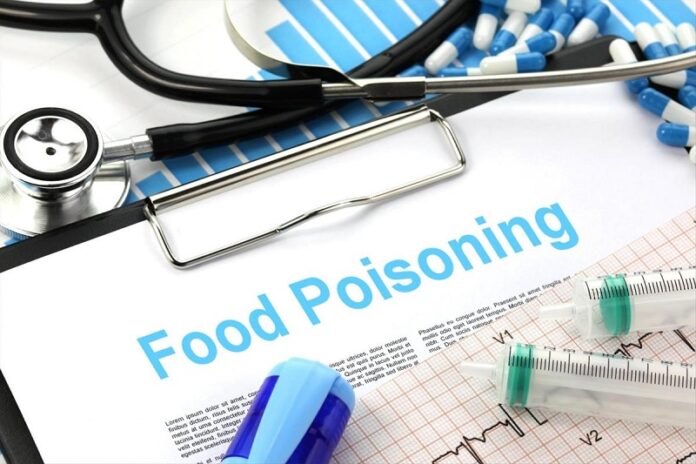What is Food Poisoning?
Food contamination is a foodborne sickness. Ingestion of food that contains poison, compound or irresistible specialist (like a bacterium, parasite, or prion) may cause unfavourable side effects in the body. Those indications might be connected distinctly to the gastrointestinal parcel causing spewing or the runs or they might include different organs like the kidney, cerebrum, or muscle.
Commonly most foodborne illnesses cause heaving and loose bowels that will quite often be brief and resolve all alone, however lack of hydration can create problems.
SYMPTOMS OF FOOD POISONING
Food contamination side effects differ with the wellspring of pollution. Most sorts of food contamination cause at least one of the accompanying signs and side effects:
- Sickness
- Vomiting
- Watery or ridiculous loose bowels
- Stomach agony and spasms
- Fever
Signs and indications might begin inside the space of hours in the wake of eating the tainted food, or they might start days or even weeks after the fact. Ailment brought about by food contamination by and large endures from a couple of hours to a few days.
When to see a specialist
If you experience any of the accompanying signs or manifestations, look for clinical consideration.
- Incessant episodes of heaving and failure to hold fluids down
- Horrendous regurgitation or stools
- The runs for over three days
- Outrageous torment or serious stomach squeezing
- An oral temperature higher than 100.4 F (38 C)
- Signs or indications of drying out – over the top thirst, dry mouth, practically no pee, serious shortcoming, wooziness, or tipsiness
- Neurological indications like hazy vision, muscle shortcoming and shivering in the arms
WHAT DOES FOOD POISONING FEEL LIKE WHEN IT STARTS?
Ordinarily, your primary care physician will analyze food contamination dependent essentially upon your side effects. While the primary manifestations are queasiness, runs, heaving, and stomach cramps, you additionally may have a fever, cerebral pain, muscle and joint pains, or blood in your stool. You may likewise be got dried out, so your mouth and throat feel dry and you don’t pee as regularly as you commonly do. Parchedness can make you discombobulated when you stand up. Once in a long while, food contamination can cause foggy or twofold vision, shivering, or shortcoming.
Over 250 microorganisms, infections, and parasites are known to cause food contamination. They can exist in food varieties at any stage, like when they’re developing, bundled, sent, put away, or cooked. Certain food sources are bound to hold onto terrible microbes. These incorporate crude eggs, unpasteurized milk, delicate cheeses, and crude or half-cooked meat or fish. New produce is another danger. Food sources made in mass are dangerous, as well. A solitary rotten one could influence the entire clump of omelettes in a smorgasbord. You could raise hell for yourself by not washing the cutting board or your hands as you get ready various food sources.
Your odds of getting food contamination are higher in the mid-year. In 90-degree heat, food can begin to ruin within 60 minutes. At a cookout or during a setting up camp excursion, you are bound to eat half-cooked barbecued meats or to deal with crude meat without admittance to cleanser and water. Microorganisms can develop rapidly inside lukewarm coolers. So assuming that you’re picnicking on a hot day, set extras back in with new ice.
4 TYPES OF FOOD POISONING

No less than 250 various types of food contamination have been recorded, yet the most widely recognized ones are e. coli, listeria, salmonella, and norovirus, which is normally called “stomach influenza.” Other more uncommon sicknesses that can be moved from food or food taking care of are botulism, campylobacter, vibrio, and shigella.
Generally, these sorts of food contamination are moved from:
- Unwashed hands dealing with food
- Unwashed crude organic product or veggies, or any crude produce with microorganisms
- Half-cooked or crude meat
- Room temperature food that ought to be refrigerated
- Cross-pollution of food microbes
- Inaccurately ready or put away shop meats, franks, or ground hamburger
- Unpasteurized milk
- Ruined dairy items or delicate cheeses
- Cutting sheets, bowls, or blades that are unwashed or cross-sullied with microorganisms
- The complete name of the specific kind of E. coli that causes an ailment is Escherichia coli 0157:H7. Most strains of e. coli are innocuous and found all through nature, while the strain that causes disease in people is found in the digestion tracts of solid domesticated animals (like dairy cattle, goats, and sheep). E. coli normally is spread during the butchering system, yet in addition can get into crude milk at dairies and can even defile close by vegetable or organic product crops. Half-cooked meat and sullied crude vegetables are the fundamental wellsprings of E. coli harming, alongside individual-to-individual contact in families and childcare focuses.
- The bacterium Listeria monocytogenes can cause a genuine disease called listerias, which generally influences infants, pregnant ladies, and grown-ups with fundamentally debilitated resistant frameworks. Listeria can be found in the dirt and water and can be conveyed by solid livestock too. Uncooked (or half-cooked) meats and vegetables, just as a few handled food varieties preceding bundling, can convey the organic entity. Children can contract listerias from their moms before birth.
- Regularly called “stomach influenza,” norovirus alludes to a gathering of infections found principally in the stool or regurgitation of tainted people. Norovirus is exceptionally infectious yet not deadly and normally passes following a couple of days. Contaminated food-administration laborers, who neglect to clean up in the wake of utilizing the restroom and afterward handle food or contact kitchen surfaces, frequently spread the disease. Contacting tainted surfaces, including others, and afterward contacting one’s mouth is one more method for getting the infection.
- The group of bacterium alluded to as Salmonella enteric, which incorporates six referred to subspecies, causes a disease known as salmonellosis. Salmonella can be seen as in crude chicken or eggs; ruined or misused milk; reptiles; corrupted produce; and poultry, pork, or meat. A more genuine yet more uncommon type of salmonellosis can prompt typhoid fever, which can be deadly. The vast majority recuperate following four to seven days without treatment yet can be destructive if it gets into the circulatory system (wherein case anti-toxins are vital).
HOW IS FOOD POISONING DIFFERENT FROM STOMACH FLU?
What causes the stomach bug?
A few distinctive infections might cause the stomach bug. Infections that most often cause it to incorporate norovirus, rotavirus, and adenovirus.
The norovirus alone causes up to 21 million cases of stomach bugs in the United States every year. Other infections, for example, astroviruses can likewise cause this condition.
Stomach bug brought about by a rotavirus or norovirus disease is exceptionally infectious. In the United States, the disease most normally happens in October and April. The most widely recognized method for getting the infection is from direct contact with somebody who is wiped out.
What causes food contamination?
Food contamination creates when irresistible organic entities like microorganisms, infections, or parasites sully food varieties. Microscopic organisms, for example, Staphylococcus aureus and Salmonella are among the main five microorganisms that cause food contamination in the United States. Norovirus is likewise inside a similar top-five rundown as indicated by the Centers for Disease Control and Prevention (CDC)Trusted Source.
You might get food contamination from eating tainted or half-cooked meat. Nonetheless, impacted meat isn’t the main food that causes food contamination. The accompanying food varieties can likewise prompt foodborne sickness:
- Crude and half-cooked eggs
- Crude fledglings
- Delicate or unpasteurized cheeses, like Brie and feta
- Vegetables and natural products that aren’t very much washed
- Crude fish or shellfish
- Defiled water
- Unpasteurized drinks, like milk, juice, and juice
- Half-cooked rice
FINAL THOUGHTS
Therefore, vomiting is a clear sign of food poisoning and without it, food poisoning sounds absurd.







